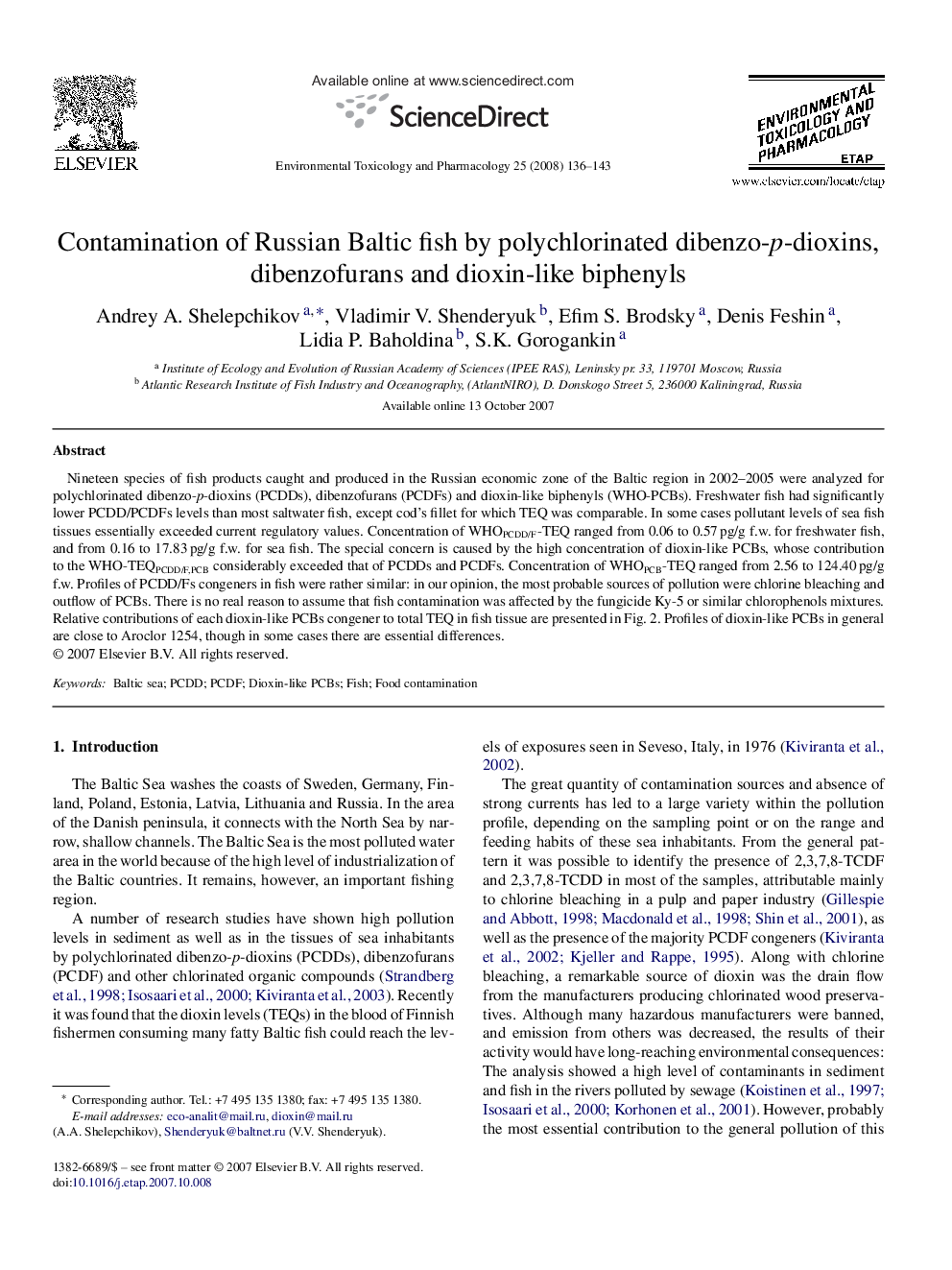| کد مقاله | کد نشریه | سال انتشار | مقاله انگلیسی | نسخه تمام متن |
|---|---|---|---|---|
| 2584382 | 1130735 | 2008 | 8 صفحه PDF | دانلود رایگان |

Nineteen species of fish products caught and produced in the Russian economic zone of the Baltic region in 2002–2005 were analyzed for polychlorinated dibenzo-p-dioxins (PCDDs), dibenzofurans (PCDFs) and dioxin-like biphenyls (WHO-PCBs). Freshwater fish had significantly lower PCDD/PCDFs levels than most saltwater fish, except cod's fillet for which TEQ was comparable. In some cases pollutant levels of sea fish tissues essentially exceeded current regulatory values. Concentration of WHOPCDD/F-TEQ ranged from 0.06 to 0.57 pg/g f.w. for freshwater fish, and from 0.16 to 17.83 pg/g f.w. for sea fish. The special concern is caused by the high concentration of dioxin-like PCBs, whose contribution to the WHO-TEQPCDD/F,PCB considerably exceeded that of PCDDs and PCDFs. Concentration of WHOPCB-TEQ ranged from 2.56 to 124.40 pg/g f.w. Profiles of PCDD/Fs congeners in fish were rather similar: in our opinion, the most probable sources of pollution were chlorine bleaching and outflow of PCBs. There is no real reason to assume that fish contamination was affected by the fungicide Ky-5 or similar chlorophenols mixtures. Relative contributions of each dioxin-like PCBs congener to total TEQ in fish tissue are presented in Fig. 2. Profiles of dioxin-like PCBs in general are close to Aroclor 1254, though in some cases there are essential differences.
Journal: Environmental Toxicology and Pharmacology - Volume 25, Issue 2, March 2008, Pages 136–143